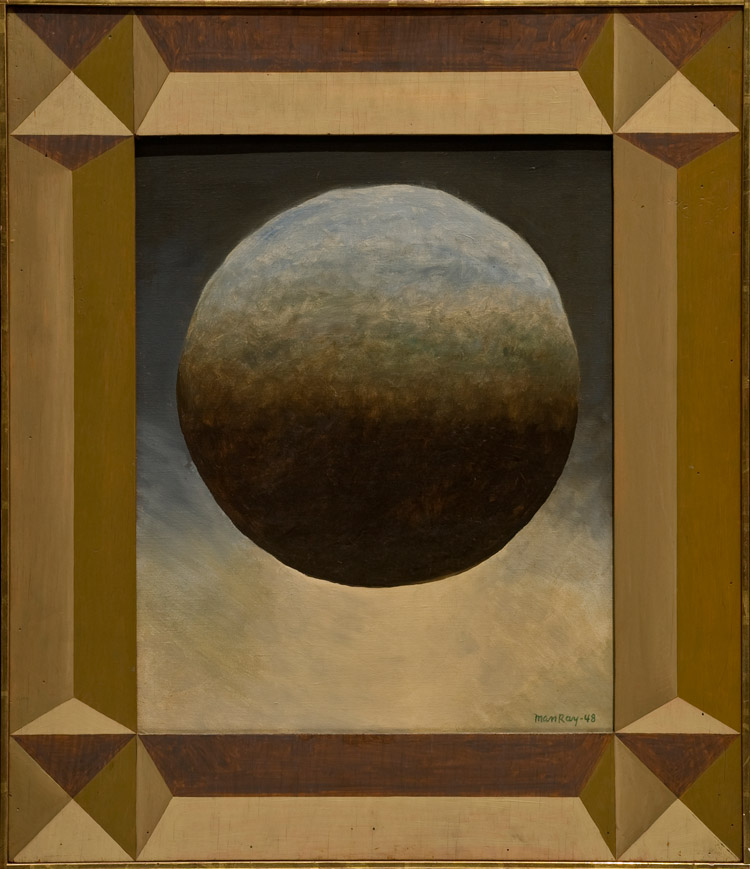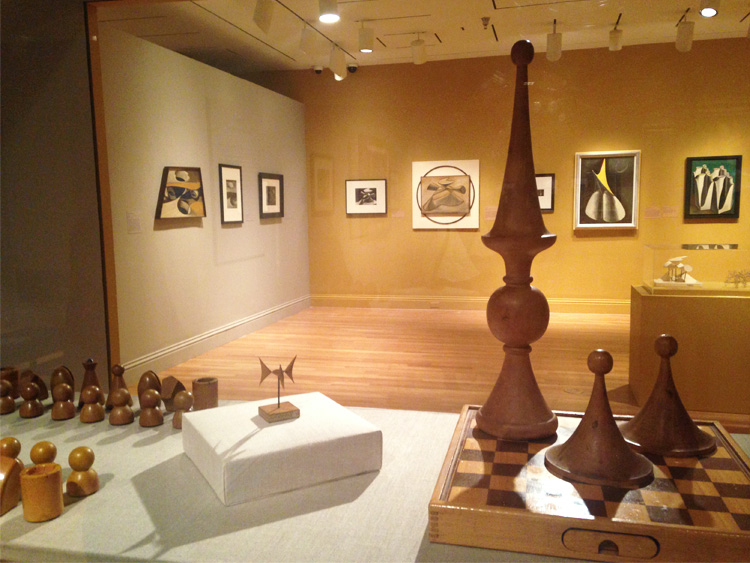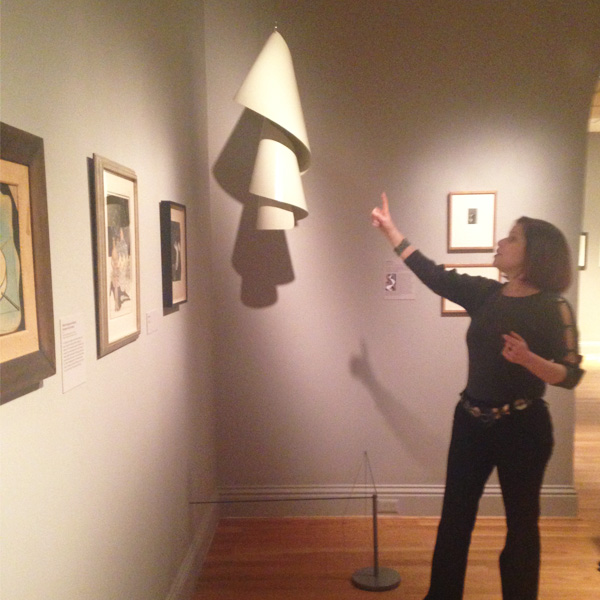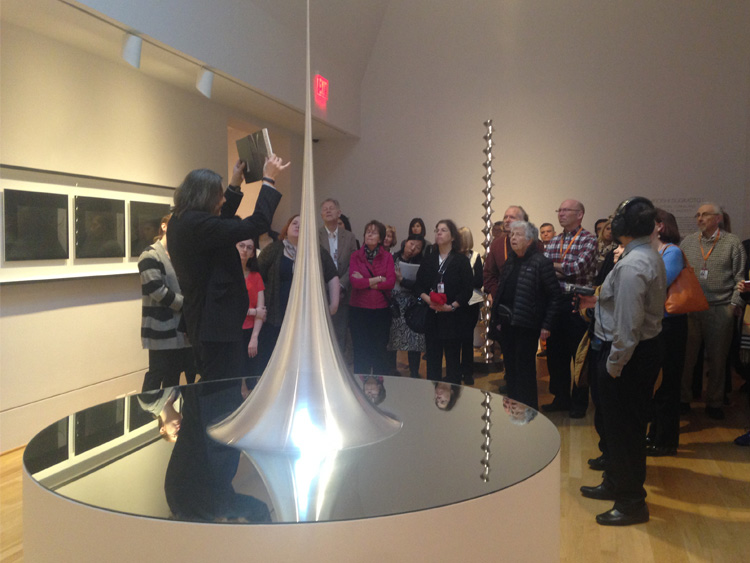
Man Ray, As You Like It, 1948. Oil on canvas, mounted in the artist’s frame, 28 1/8 × 24 1/8 in. including frame. Hirshhorn Museum and Sculpture Garden, Smithsonian Institution, Washington, DC, Gift of Joseph H. Hirshhorn, 1966
As Man Ray launched into his Shakespearean Equations project, he reworked a canvas from 1940 titled Disillusion. Transforming the composition into As You Like It, the artist removed the disembodied hand, changed the globe-like sphere into a celestial form, and encased the floating orb in a rectangular trompe l’oeil frame. Although not inspired by any specific mathematical model, this painting opens a window into the evolution of the Shakespearean Equations series, as Man Ray re-conceptualized geometric forms and introduced them in new contexts.
Wendy Grossman, Exhibition Curator



